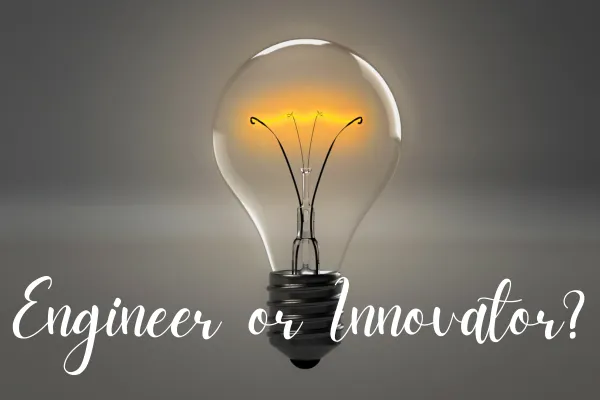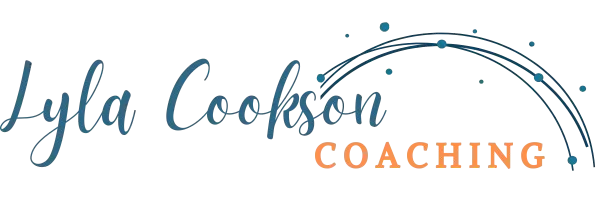Mindset Over Matter Blog

Engineer or Innovator?
Engineer or Innovator? How to Shift Your Mindset to Drive Innovation
As engineers, we’re trained to solve problems. We design, we build, and we optimize. But there’s a big difference between being an engineer and being an innovator. Engineers often focus on refining what's already there, while innovators reimagine what could be—pushing the boundaries of what's possible. The shift from problem-solving to innovation is not just about adding new skills; it's about adopting a new mindset.
In today's fast-evolving tech landscape, companies don't just want engineers who can execute—they want innovators who can envision the future and shape it. If you’ve ever wondered how you can drive more innovation in your engineering role, the answer lies in shifting how you think. Here’s how to make that leap.
1. Embrace Curiosity Over Certainty
Engineers often work in environments that demand precision and certainty. But innovation requires something different: curiosity. While problem-solving is about finding the most efficient way to do something, innovation begins with asking “What if?” rather than just “How?”
Tip: Start by questioning assumptions. Instead of jumping straight to a solution, pause to ask: “Why do we do it this way? What would happen if we tried something completely different?” Innovation thrives in an environment where curiosity leads the way, even if the path ahead isn’t fully mapped out.
2. Shift from Fixing to Creating
Problem-solving, at its core, is about fixing something that’s broken or making something work better. While this is essential, innovation goes beyond fixing—it’s about creating something new and groundbreaking. To make this shift, you have to start thinking less about efficiency and more about possibility.
Tip: Challenge yourself to design from scratch—even when you don’t need to. When faced with a problem, think: “What if I were to reinvent this solution completely, from the ground up?” This creative process can open the door to new, innovative approaches that would never emerge if you focused solely on fixing the current system.
3. Cultivate a Growth Mindset
A fixed mindset—believing that your talents and abilities are static—can limit your potential as an innovator. On the other hand, a growth mindset opens the door to continuous learning and experimentation. To drive innovation, you have to be willing to step outside your comfort zone, make mistakes, and grow from them.
Tip: Shift your focus from perfection to progress. Understand that failure is a part of innovation. Every setback is a learning opportunity that moves you closer to breakthrough ideas. Actively seek out new learning opportunities, whether it’s in technology, design thinking, or interdisciplinary collaboration.
4. Look Beyond Your Field
Innovation often happens at the intersections of disciplines. If you’re stuck in a narrow view of your engineering role, you might miss out on cross-industry or cross-functional insights that could lead to breakthrough ideas. Engineers who innovate look beyond their immediate technical environment for inspiration.
Tip: Step out of your silo. Attend conferences outside of your field, read widely across disciplines, or collaborate with colleagues in other departments like marketing, design, or product management. By broadening your view, you can bring fresh perspectives and ideas to your work, sparking innovative solutions that transcend traditional boundaries.
5. Think Long-Term, Not Just Immediate Solutions
Engineers are often under pressure to solve problems quickly and efficiently, which can lead to focusing on short-term solutions. However, innovation demands long-term thinking. Innovators consider not only how to solve today's problem but how their solution will evolve and impact the future.
Tip: Practice long-term thinking by asking questions like, “How will this solution impact the industry in 5-10 years? How can it scale or adapt to new technologies?” Instead of just optimizing for today’s needs, think about how your work can shape the future of your industry.
6. Prioritize User-Centric Design
Engineers typically focus on technical specifications, but innovators focus on the end user. Whether you’re designing hardware, software, or a new process, placing the user’s needs and experiences at the center of your work is key to innovation. This shift in focus can help you create more impactful, forward-thinking solutions.
Tip: To shift from a technical to a user-centered mindset, spend time understanding the real-world problems your users face. Consider how your work impacts their daily lives. Engage in user research, conduct interviews, or analyze user feedback to gain insights that drive human-centered innovation.
7. Foster a Collaborative Mindset
Innovation rarely happens in isolation. While problem-solving can often be an individual endeavor, innovation requires collaboration and diversity of thought. By tapping into the perspectives and expertise of others, you can spark new ideas that wouldn’t have been possible alone.
Tip: Create opportunities for collaboration. This can be as simple as organizing brainstorming sessions with colleagues from different teams or working on cross-functional projects. The more you surround yourself with diverse thinkers, the more you can challenge your own ideas and drive innovation forward.
8. Be Willing to Break the Rules
Engineers are typically bound by industry standards, guidelines, and best practices. However, innovation sometimes requires breaking those rules to find new ways of thinking and doing. The most groundbreaking ideas often emerge when we let go of the constraints that hold us back.
Tip: Identify the “rules” in your industry or role, and then challenge them. Ask yourself, “What would happen if I ignored this standard and tried something different?” Breaking the rules doesn’t mean disregarding safety or ethics, but it can mean questioning long-standing conventions that may no longer serve their purpose.
9. Adopt an Experimental Mindset
In engineering, we often seek the “right” answer. But in innovation, there’s rarely one correct solution. It’s an iterative process, and it’s through experimentation—testing, failing, learning, and trying again—that breakthroughs happen.
Tip: Develop an experimental mindset by embracing rapid prototyping and testing. The quicker you can iterate on an idea, the more feedback you can gather and improve. Be open to the possibility that your initial idea might not work—and that’s okay. Innovation is a journey, not a destination.
Conclusion: From Problem-Solver to Innovator
Making the shift from an engineer to an innovator isn’t about abandoning your technical skills—it’s about enhancing them with a mindset that fosters creativity, curiosity, and long-term thinking. Innovation is the bridge between engineering excellence and future breakthroughs, and by cultivating the right mindset, you can become a driving force for transformative change in your field.
So, ask yourself: Are you simply solving problems, or are you innovating the future? With the right mindset shifts, you can move beyond the immediate challenges to shape the future of your industry and the world.
Don't let your current mindset slow you down or limit your potential. Work with me to build the mindset that will take you from engineer to innovator. Start by taking these free assessments to determine the thoughts that create your current mindset--and sabotage your future, innovative mindset.
Free Saboteur Assessment: Learn which negative thoughts and emotions hold you back. Schedule yours today.
Free PQ Mindset Score: Discover how mentally fit you are by measuring how often your mind works for you versus against you. Get your PQ Mindset Score here.
More Information: Visit my website to learn more about the Positive Intelligence Program and how it can help you take control of your mindset.
To find more information about me and my other offerings, please visit my website: lylacookson.com
Disclaimer: The content on this site is for informational and educational purposes only and is not intended as medical, mental health, legal, or financial advice. Coaching services and programs offered by Lyla Cookson are designed to support personal growth and mindset development but are not a substitute for professional care. Your use of this site signifies your agreement to take full responsibility for any outcomes based on the information provided. Read full disclaimer at link above.
© 2025 - Lyla Cookson Coaching - All rights reserved
Disclaimer: The content on this site is for informational and educational purposes only and is not intended as medical, mental health, legal, or financial advice. Coaching services and programs offered by Lyla Cookson are designed to support personal growth and mindset development but are not a substitute for professional care. Your use of this site signifies your agreement to take full responsibility for any outcomes based on the information provided. Read full disclaimer at link above.
© 2025 - Lyla Cookson Coaching - All rights reserved





